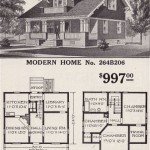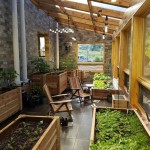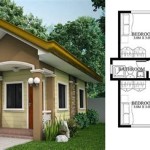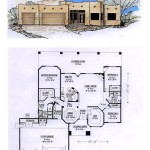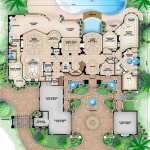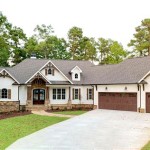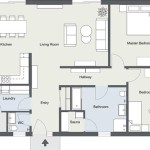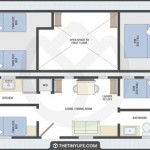2 Bedroom Modern Home Plans: Maximizing Space and Style
Modern home plans emphasize functionality, clean lines, and efficient use of space. Two-bedroom modern home plans are particularly popular due to their suitability for small families, couples, or individuals seeking a comfortable and stylish living environment without the maintenance demands of larger properties. These plans prioritize open-concept living, natural light, and integration with outdoor spaces.
The design of a two-bedroom modern home involves careful consideration of layout, materials, and aesthetics. The goal is to create a dwelling that is both visually appealing and highly functional, meeting the specific needs and lifestyle of its occupants. Modern architectural principles often dictate the incorporation of sustainable materials and energy-efficient systems, contributing to both environmental responsibility and long-term cost savings.
The adaptability of two-bedroom modern homes lends to their widespread appeal. They can be implemented in a variety of settings, from urban infill lots to suburban developments and rural landscapes. The floor plans are often designed to facilitate future expansion or modification, providing flexibility as the homeowner's needs evolve.
Open-Concept Living Spaces
A defining characteristic of modern home design is the open-concept living space. In a two-bedroom modern home, this typically involves combining the living room, dining area, and kitchen into a single, unified area. This approach maximizes the perceived square footage and creates a sense of spaciousness. By minimizing internal walls, natural light can penetrate deeper into the home, further enhancing the feeling of openness.
The layout of the open-concept space requires careful planning to ensure functionality and flow. Zones for cooking, dining, and relaxation are defined through furniture placement, changes in flooring, or subtle architectural features such as partial walls or dropped ceilings. The kitchen, often serving as the focal point of the open area, frequently incorporates an island or peninsula that provides additional counter space and serves as a gathering spot for family and guests.
The integration of indoor and outdoor living is another key element of modern design. Large windows, sliding glass doors, and patios or decks extend the living space into the exterior, creating a seamless connection between the interior and the surrounding landscape. This approach enhances the sense of spaciousness and provides opportunities for outdoor dining, entertaining, and relaxation.
Considerations for acoustics and privacy are essential in open-concept spaces. Sound-absorbing materials, such as rugs, curtains, and upholstered furniture, can help to mitigate noise transmission. Strategically placed screens or partitions can provide visual separation without completely blocking the flow of light and air. The arrangement of furniture can also be used to create distinct zones and enhance privacy within the open space.
Bedroom Design and Functionality
In a two-bedroom modern home, the design of the bedrooms is critical for ensuring comfort and privacy. The master bedroom is typically larger than the second bedroom and often includes an ensuite bathroom and walk-in closet. The second bedroom can serve as a guest room, home office, or child's bedroom, depending on the needs of the homeowner.
The layout of the bedrooms should maximize natural light and ventilation. Large windows are strategically placed to capture sunlight and provide views of the surrounding landscape. The orientation of the bedrooms relative to the sun's path is considered to optimize thermal comfort and minimize the need for artificial lighting and cooling.
Storage is a key consideration in bedroom design. Built-in closets, shelving units, and drawers can help to maximize space and keep the room organized. Walk-in closets are a desirable feature in the master bedroom, providing ample storage for clothing, shoes, and accessories. The second bedroom may incorporate a smaller closet or utilize freestanding storage units to accommodate its specific function.
The design of the bedroom should also consider the occupants' personal preferences and aesthetic tastes. Modern homes often feature minimalist decor, with clean lines, neutral colors, and natural materials. Personal touches, such as artwork, photographs, and decorative accessories, can be used to personalize the space and create a sense of warmth and character.
The location of the bedrooms within the overall floor plan is carefully considered to ensure privacy and minimize noise intrusion. Bedrooms are typically located away from the main living areas and street traffic to create a quiet and peaceful environment. Soundproofing measures, such as insulated walls and ceilings, can further enhance privacy and reduce noise transmission.
Material Selection and Sustainability
Modern home design places a strong emphasis on material selection and sustainability. Sustainable materials are chosen for their environmental benefits, durability, and aesthetic qualities. Energy-efficient systems are incorporated to reduce energy consumption and lower utility bills.
Common sustainable materials used in modern homes include bamboo flooring, recycled glass countertops, and reclaimed wood. These materials are environmentally friendly and add a unique character to the home. Low-VOC paints and finishes are used to minimize indoor air pollution and create a healthier living environment.
Energy-efficient windows and doors are essential for reducing heat loss and minimizing energy consumption. Double-paned or triple-paned windows with low-E coatings can significantly improve the thermal performance of the home. Proper insulation in the walls, ceilings, and floors is also crucial for maintaining a comfortable indoor temperature and reducing energy waste.
Solar panels can be integrated into the roof design to generate electricity and reduce reliance on fossil fuels. Solar water heaters can also be used to heat domestic water, further reducing energy consumption. Smart home technology, such as programmable thermostats and automated lighting systems, can help to optimize energy usage and lower utility bills.
Water conservation is another important aspect of sustainable home design. Low-flow toilets, showerheads, and faucets can significantly reduce water consumption. Graywater recycling systems can be used to reuse water from showers and sinks for irrigation purposes. Drought-tolerant landscaping can minimize the need for watering and conserve water resources.
The design of the home should also consider the surrounding environment and minimize its impact on the natural ecosystem. Native plants are used in landscaping to support local wildlife and reduce the need for pesticides and fertilizers. Rainwater harvesting systems can be used to collect rainwater for irrigation or other non-potable uses. The overall goal is to create a home that is both aesthetically pleasing and environmentally responsible.
Modern home plans often incorporate passive design strategies to maximize energy efficiency. These strategies include optimizing the orientation of the home to the sun, using natural ventilation to cool the home, and providing shading to reduce heat gain. Passive design strategies can significantly reduce the need for mechanical heating and cooling, lowering energy consumption and reducing the home's carbon footprint.
The use of natural light is a key element of sustainable design. Large windows and skylights are strategically placed to maximize daylight penetration and reduce the need for artificial lighting. Light shelves and light tubes can be used to distribute natural light deeper into the home. Proper lighting design can improve the visual comfort of the home and reduce energy consumption.
The selection of materials and systems for a two-bedroom modern home should be guided by a commitment to sustainability and environmental responsibility. By choosing sustainable materials, incorporating energy-efficient systems, and implementing passive design strategies, homeowners can create a dwelling that is both beautiful and environmentally friendly. This approach not only benefits the environment but also provides long-term cost savings and enhances the quality of life for the occupants.

Modern 2 Bedroom House Plan 61custom Contemporary Plans Courtyard Floor

Affordable Two Bedroom House Plan Guest Plans Small

Unique Small 2 Bedroom House Plans Cabin Cottage

Modern Style With 2 Bed 1 Bath Small House Plans Bungalow

2 Room House Plans Low Cost Bedroom Plan Nethouseplansnethouseplans

Two Bedroom Modern House Plan 80792pm Architectural Designs Plans

12 Simple 2 Bedroom House Plans With Garages Houseplans Blog Com

Modern Style House Plan 2 Beds Baths 1417 Sq Ft 1073 5 Dreamhomesource Com

924 Sq Ft Home Plan 2 Bedroom Contemporary Style Sundeck

2 Bedroom Modern House 1 Bath 1277 Sq Ft Plan 158 1290

